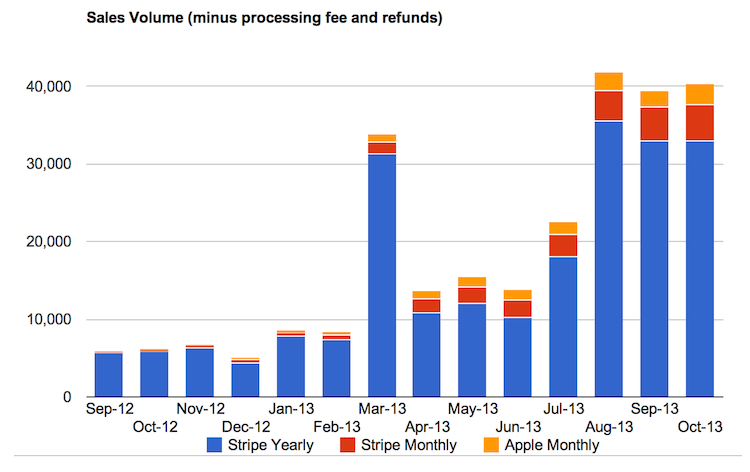Sustainable Business Models
In pasts months, a number of startups have closed1. These companies raised money, launched good products, gained attention from the press… and then closed. It’s not my intention to judge the decisions the founders of these startups made. Their closing is sad news. But… what happened? Even with the limited information available publicly, there are some lessons that can be learned by trying to understand the business models of some of them.
Know your operating costs
Knowing your contribution margin —the selling price minus the variable costs per unit— is important, because if your contribution margin is negative, then you are selling at a marginal loss. The more customers you get, the more money you loose.
Everpix was a great online photo archiving and organizing service. They had nailed a problem worth solving. They also had an excellent team. Everpix got very positive reviews, the service was really good. Their user base was growing.
These graphs were published in 2013:
